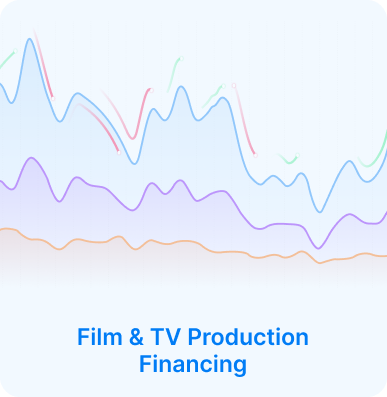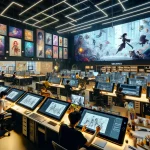Introduction
Ever watched a movie and thought, “Wow, how did they even DO that?”
Chances are, you were marveling at the incredible Types of VFX in Entertainment.
From epic space battles to fantastical creatures, visual effects (VFX) are the secret sauce that brings impossible worlds to life. But it’s not just smoke and mirrors; it’s a complex, fascinating field that blends artistry with cutting-edge technology.
Understanding these different types isn’t just for film buffs. If you’re a producer, director, or even a marketer in the entertainment space, knowing the lingo and the possibilities can be a game-changer for your projects.
It helps you budget better, communicate your vision clearly, and ultimately, create more compelling content. In this post, I’m going to walk you through the core types of VFX, how they work, and why they matter. Let’s demystify the magic!
Curious how Vitrina can help you? Try it out today!
Trusted by global entertainment leaders to grow business, acquire high-demand content, promote projects and services, and track every Film + TV production worldwide
Table of content
- Introduction
- Key-Takeaways
- Step 1: Understanding Computer Generated Imagery (CGI) – The Digital Revolution
- Step 2: Mastering Compositing – The Art of Blending Realities
- Step 3: Leveraging Motion Capture (MoCap) – Bringing Characters to Life
- Step 4: Exploring Matte Paintings – Crafting Epic Vistas
- Step 5: Harnessing Simulation FX – Recreating Natural Forces
- Step 6: Diving into 3D Modeling – Building Digital Worlds
- Step 7: Utilizing Rotoscoping – The Unseen Backbone
- How Vitrina Helps You Navigate the World of VFX
- Conclusion
- FAQs
Key Takeaways
| VFX Type | Key Characteristic | Common Use Case |
|---|---|---|
| Computer Generated Imagery (CGI) | Creating or enhancing visuals digitally | Characters, environments, complex scenes |
| Compositing | Combining multiple visual elements into one image | Green screen, matte paintings, layering effects |
| Motion Capture (MoCap) | Recording human movement to animate digital characters | Realistic character animation, virtual actors |
| Matte Painting | Creating digital or traditional painted backgrounds | Expansive landscapes, historical settings |
| Simulation FX | Recreating natural phenomena digitally | Fire, water, smoke, explosions, cloth |
| 3D Modeling | Creating three-dimensional digital objects | Props, vehicles, characters, environments |
| Rotoscoping | Manually outlining elements frame-by-frame | Isolating objects/actors for compositing |
Need VFX Experts for Your Next Blockbuster?

Step 1: Understanding Computer Generated Imagery (CGI) – The Digital Revolution
Alright, let’s kick things off with the big one: CGI. You’ve heard the term a million times, right?
CGI is essentially the process of creating or manipulating images and animations using computer software. It’s one of the most versatile Types of VFX in Entertainment.
Think about the dinosaurs in “Jurassic Park,” the incredible alien worlds in “Avatar,” or even the seamless digital de-aging of actors.
That’s CGI flexing its muscles. It’s not just about creating things from scratch; it can also be used to enhance existing footage, like adding crowds to a stadium or removing unwanted objects from a scene.
Why is CGI so crucial?
- Limitless Creativity: If you can imagine it, CGI can probably create it. This frees filmmakers from the constraints of the physical world.
- Safety and Cost-Effectiveness: Creating a massive explosion digitally is far safer and often cheaper than doing it practically. Building a digital set can be more economical than a physical one for certain scenarios.
- Consistency and Control: CGI elements can be tweaked and perfected with a level of control that practical effects can’t always offer. Need that dragon to be 10% bigger? Easy fix in CGI.
The power of CGI lies in its ability to bring fantastical visions to life and solve complex filmmaking challenges. It’s a cornerstone of modern entertainment production.
Step 2: Mastering Compositing – The Art of Blending Realities
Next up is compositing, often called “comping.” This is where the real magic of illusion happens.
Compositing is the process of combining multiple visual elements from different sources to make them appear as if they are all part of the same scene. It’s like digital “glue” for visuals.
Ever seen an actor performing in front of a green screen?
That footage is later taken by a compositor who replaces the green with a separately created background – maybe a bustling cityscape or an alien planet. That’s compositing in action! It’s fundamental to nearly all Types of VFX in Entertainment.
Key Compositing Techniques:
- Chroma Keying (Green/Blue Screen): Isolating a subject by filming against a solid colored background and then replacing that color.
- Matte Generation: Creating masks to define which parts of an image are opaque or transparent, allowing layers to be seamlessly combined.
- Layering: Stacking multiple visual elements (live-action footage, CGI, matte paintings) and adjusting their properties (color, lighting, focus) to blend them realistically.
Good compositing is invisible. The goal is for the audience to never even realize that different elements were shot or created separately.
It requires a keen eye for detail, lighting, and perspective. For example, ensuring the lighting on an actor matches the lighting of the digital background is crucial for a believable shot.
Step 3: Leveraging Motion Capture (MoCap) – Bringing Characters to Life
Motion Capture, or MoCap, has revolutionized how we create believable digital characters.
This technique involves recording the movements of a real actor (or object) and then translating that data to animate a 2D or 3D digital model. Think of Gollum from “Lord of the Rings” or Caesar from “Planet of the Apes.”
Actors wear special suits fitted with markers or sensors. Cameras and software track these markers, capturing every nuance of their performance – from grand gestures to subtle facial expressions. This data then drives the animation of the digital character, making its movements incredibly lifelike.
Advantages of MoCap:
- Realistic Animation: Captures the subtleties of human (or animal) movement that are hard to replicate with traditional keyframe animation.
- Performance-Driven: Allows actors’ performances to directly influence the digital character, leading to more emotive and believable results.
- Efficiency for Complex Animations: Can be faster for animating complex sequences or large numbers of characters compared to animating everything by hand.
MoCap isn’t just for fantastical creatures. It’s also used for creating digital stunt doubles, animating crowds, and even in video games to create realistic character movements.
It’s a powerful tool among the Types of VFX in Entertainment for bridging the gap between human performance and digital creation.
Overwhelmed by VFX Vendor Choices?

Step 4: Exploring Matte Paintings – Crafting Epic Vistas
Long before complex CGI, matte paintings were the go-to for creating expansive or imaginary environments. Originally, these were highly detailed paintings on glass, strategically placed to blend with live-action footage.
Today, digital matte painting is the norm, but the principle remains the same: creating convincing backgrounds that would be too expensive, impractical, or simply impossible to build or film in reality.
Think of the breathtaking landscapes in “Game of Thrones” or the futuristic cityscapes in “Blade Runner 2049.” Many of these are built upon stunning digital matte paintings.
These aren’t just static images; often, they incorporate subtle animations like moving clouds or distant lights to add life.
What makes a great Matte Painting?
- Photorealism: The painting must seamlessly blend with live-action elements.
- Perspective and Scale: Creating a believable sense of depth and vastness.
- Integration: Careful color grading and lighting to match the foreground footage.
Matte paintings are a testament to artistic skill in the VFX pipeline, proving that traditional art principles are still vital in the digital age.
They are essential for world-building and establishing the mood and scale of a scene, making them a crucial visual effect.
Step 5: Harnessing Simulation FX – Recreating Natural Forces
How do you create realistic fire, water, smoke, explosions, or even the way fabric moves in the wind, without actually setting things on fire or waiting for a hurricane?
That’s where Simulation FX comes in. This branch of VFX uses specialized software and algorithms to simulate the behavior of real-world physics and natural phenomena.
When you see a superhero smashing through a building, the debris, dust, and a collapsing structure are often created using simulations.
When a ship battles a storm at sea, the colossal waves and spray are likely simulated. It’s a highly technical yet artistic discipline within the Types of VFX in Entertainment.
Common Simulation Types:
- Fluid Dynamics: For water, smoke, fire, and other liquids/gases.
- Rigid Body Dynamics: For shattering objects, collapsing structures, and collisions.
- Cloth Simulation: For realistic movement of clothing and fabrics.
- Hair and Fur Simulation: For lifelike animal fur or character hair.
Simulations can be incredibly complex and computationally intensive, often requiring powerful computers and significant rendering time. But the results can be astonishingly realistic, adding a layer of believability to action sequences and environmental effects that would be impossible to achieve otherwise.
Step 6: Diving into 3D Modeling – Building Digital Worlds
Before you can animate a character, blow up a car, or fly a spaceship through a digital galaxy, you need the digital assets themselves.
This is where 3D modeling comes in. It’s the process of creating a three-dimensional digital representation of any object or surface.
Using specialized software, 3D modelers sculpt and shape digital “clay” to create everything from props and vehicles to characters and entire environments.
These models are then “textured” (adding color, surface details, and materials) and “rigged” (creating a digital skeleton for animation) before they can be used in a scene.
The Importance of 3D Modeling:
- Asset Creation: Provides the foundational elements for most CGI and animated sequences.
- Prototyping: Can be used to visualize sets, props, or characters before physical construction or final animation.
- Versatility: 3D models can be used in films, TV shows, video games, virtual reality, and more.
Whether it’s a detailed creature, a futuristic weapon, or an entire cityscape, 3D modeling is the bedrock for many of the stunning visuals we see on screen. It’s a meticulous process that requires both artistic talent and technical proficiency, forming a critical part of the Types of VFX in Entertainment pipeline.
Step 7: Utilizing Rotoscoping – The Unseen Backbone
Rotoscoping might not be the flashiest of VFX types, but it’s often one of the most crucial and labor-intensive. At its core, rotoscoping is the process of manually tracing over footage, frame by frame, to create a matte or mask for an element.
This allows artists to isolate characters or objects from their background (or foreground) so they can be placed into a different scene or have effects applied specifically to them.
Imagine you need to place a CGI monster behind an actor who was filmed on a real location (not a green screen).
Rotoscoping would be used to carefully cut the actor out of each frame so the monster can be convincingly composited behind them. It’s also used for wire removal, adding effects to specific areas, or color correcting isolated elements.
Why Rotoscoping Still Matters:
- Precision: When automated keying tools fail (e.g., complex backgrounds, motion blur), rotoscoping provides precise control.
- Flexibility: Essential for integrating VFX into footage not shot with effects in mind.
- Problem Solving: Often the go-to solution for tricky compositing challenges.
While software has made rotoscoping more efficient, it often still requires a significant amount of manual work. It’s detailed, painstaking, and absolutely essential for achieving seamless integration in many complex VFX shots.
It’s the unsung hero of many stunning visual effects sequences.
How Vitrina Helps You Navigate the World of VFX
Understanding all these Types of VFX in Entertainment is one thing, but finding the right partners to bring your vision to life is another challenge altogether.
That’s where Vitrina comes in. We provide a comprehensive global platform that helps you discover and connect with specialized VFX studios and vendors.
Whether you need experts in CGI, compositing, MoCap, or any other visual effect, Vitrina’s curated database and powerful search tools streamline your sourcing process.
You can explore vendor profiles, see their past projects (potentially using our Project Tracker for insights), and make informed decisions, ensuring your project gets the best talent for the job.
Our solution is designed to simplify how entertainment professionals find and manage their critical production partners.
Conclusion
So there you have it – a whirlwind tour of the core Types of VFX in Entertainment. From the foundational building blocks of 3D modeling and rotoscoping to the spectacular results of CGI, compositing, and simulation FX, each technique plays a vital role in crafting the cinematic experiences we love.
The world of VFX is constantly evolving, with new technologies and creative approaches emerging all the time. But understanding these fundamental types gives you a solid base, whether you’re creating, managing, or simply appreciating the art of visual storytelling. The key is to know what’s possible and how these tools can serve your narrative.
What’s the first strategy or VFX type you’re keen to learn more about or potentially use in an upcoming project? Let me know in the comments.
Ready to find the perfect VFX partners to bring your creative vision to life? Don’t let the complexity of sourcing hold you back. Sign up for Vitrina today and unlock access to a global network of top-tier VFX studios and creative talent. Make your next project visually stunning with the right team by your side!
Frequently Asked Questions
Good question! Special Effects (SFX) are typically practical effects done on set, like pyrotechnics, animatronics, or makeup effects. Visual Effects (VFX) are created or manipulated digitally in post-production. Often, they work together!
AI is making a big impact! It’s being used to automate repetitive tasks like rotoscoping and match-moving, enhance rendering speeds, and even assist in creating textures and 3D models. It’s more of a powerful tool for artists than a replacement.
It really depends on the complexity and scale. Generally, heavy CGI involving creature creation, large-scale destruction simulations, or extensive digital environments can be very costly due to the specialized talent, software, and rendering time required.
That’s a common challenge! Using a platform like Vitrina can significantly help. You can filter vendors by specialization (e.g., CGI, compositing, specific simulation types), location, budget range, and review their portfolios to find the perfect match for your project’s unique requirements.































